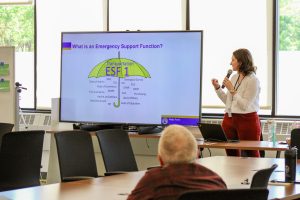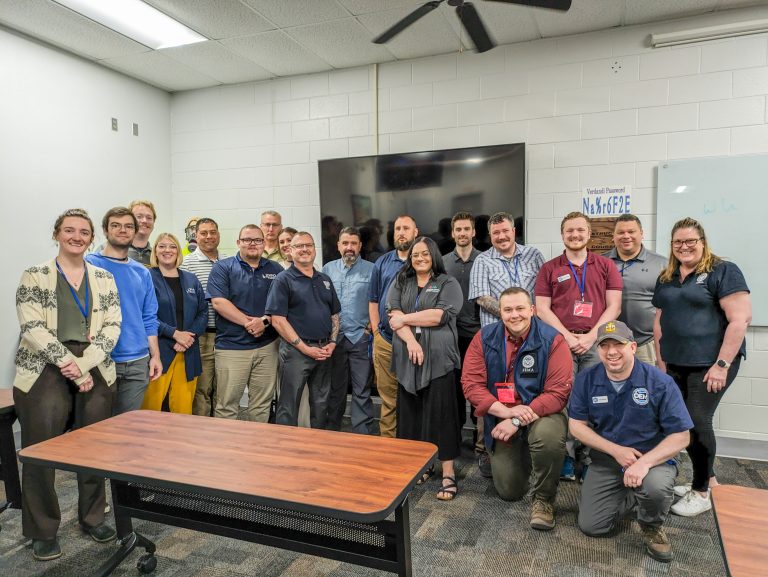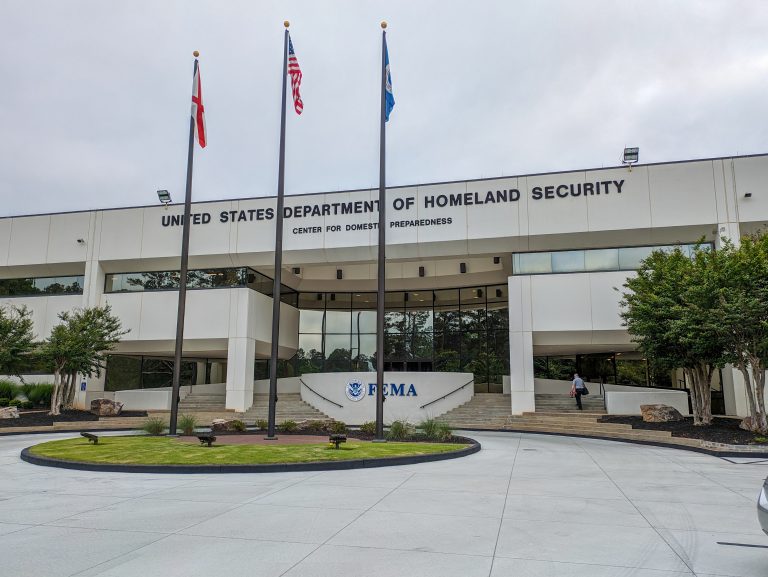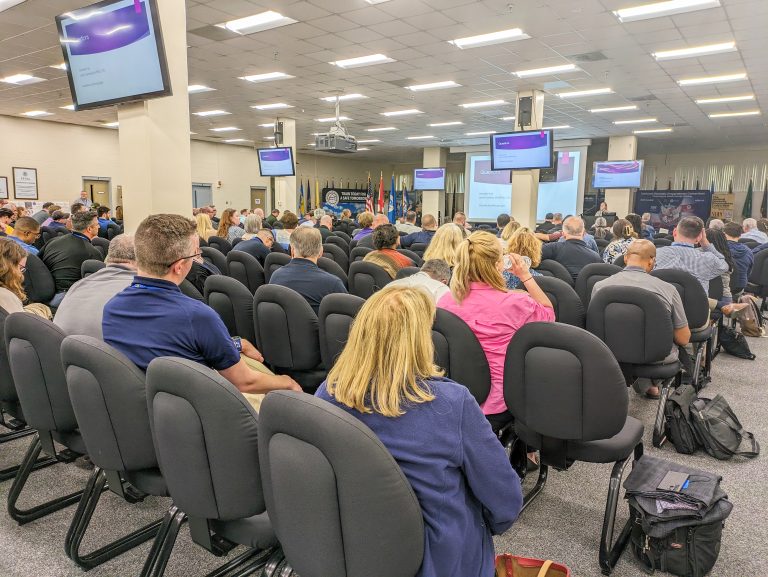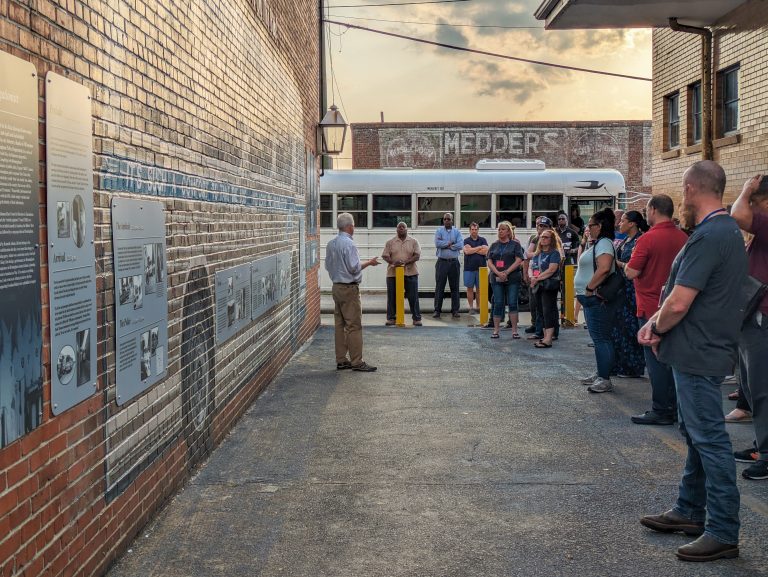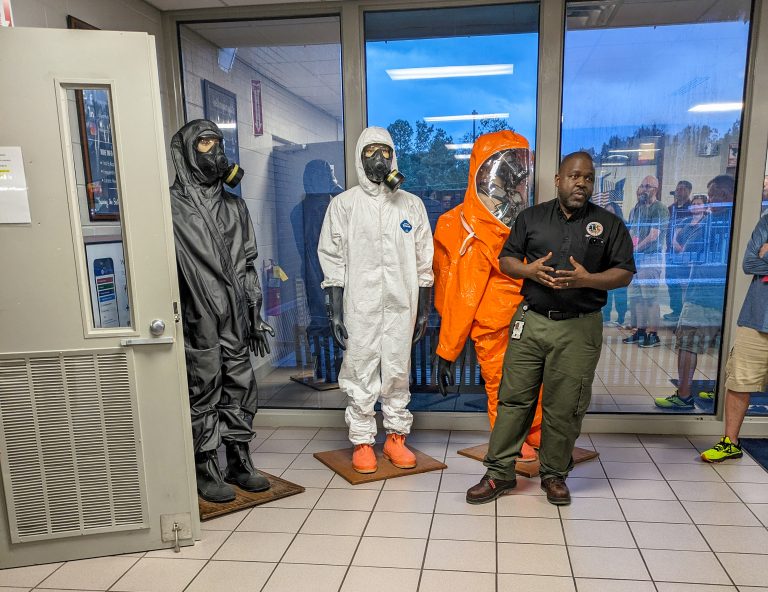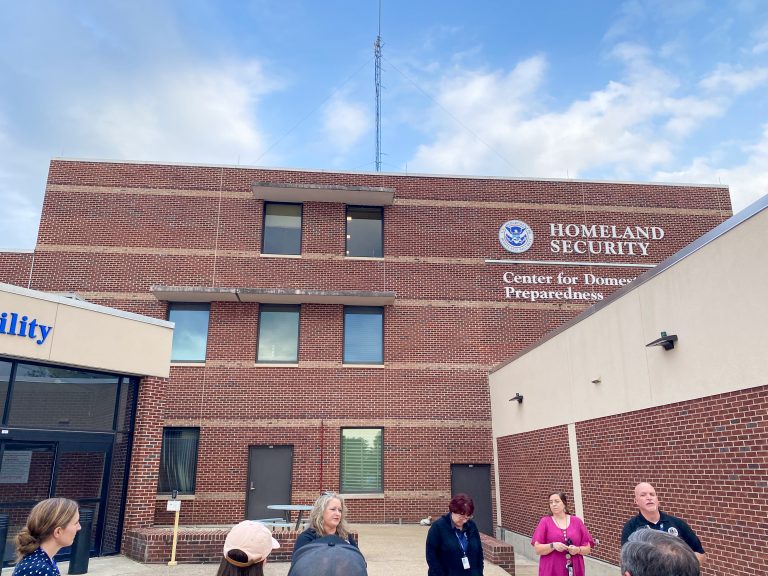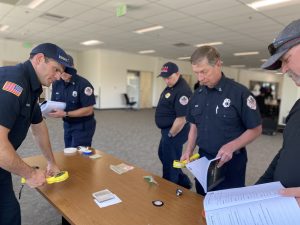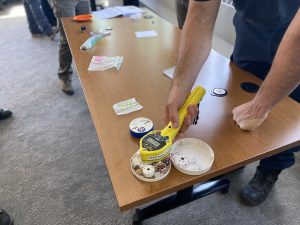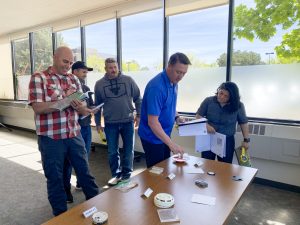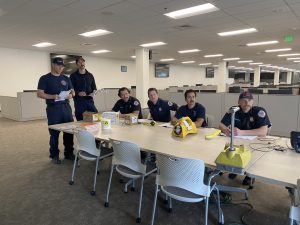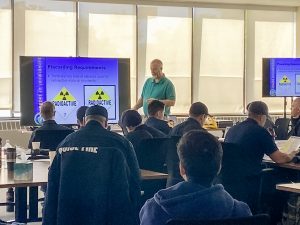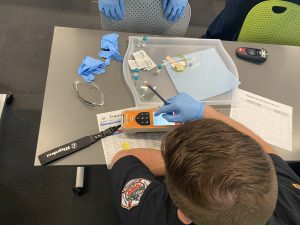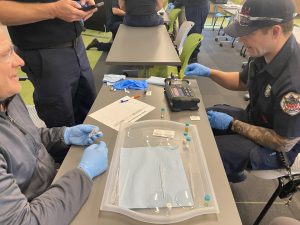Category: Blog Posts
Idaho Braces for Above-Normal Wildfire Season: How to Stay Safe

The National Interagency Fire Center (NIFC) predicts Idaho and neighboring states will see above normal wildland fires potential now through the end of September. While wildfire season has become a year-round event in areas, the chances of significant wildfires are greater than usual around the state and region during these next few months.
Wildfires can threaten people, homes, and natural resources. It is crucial for everyone to prepare and know what to do, especially during this heightened wildland fire potential period, in case a wildfire strikes their community. The Idaho Office of Emergency Management (IOEM) encourages Idahoans to take proactive measures to ensure the safety of themselves and their loved ones.
Prepare for Wildfires
- Stay Informed: Sign up for and stay up to date for local alerts, such as the Integrated Public Alert and Warning System (IPAWS), and monitor air quality alerts. Follow local news outlets and state and local government social media channels to stay updated on the latest news and events.
- Make a Plan: Make sure your household knows evacuation procedures. Be sure to create and review evacuation plans for offices and schools, and practice evacuation drills regularly.
- Know Your Evacuation Zone: Identify multiple evacuation routes and conduct evacuation drills with household members.
- Strengthen Your Home: Utilize fire-resistant materials, identify outdoor water sources with hoses, establish a 30-foot fire-resistant zone around homes, and designate sealed rooms for smoky conditions.
- Gather Supplies: Stock up on essentials in a go bag, including a first aid kit, non-perishable food, water, phone charger, pet supplies, medication and N95 masks for smoke protection. Keep the go bag in a place that’s easy to remember and access in case you need to evacuate your home quickly.
- Review Important Documents: Keep insurance policies and identification documents up to date and maintain digital copies in secure locations.
How to Stay During a Wildfire
- Stay Informed: Pay attention to emergency alerts and notifications for information and instructions.
- Be Ready to Go: Evacuate immediately and safely when authorities tell you to do so.
- Check with local authorities for the latest information about public shelters or check open locations on the FEMA app. You can also download the free Red Cross Emergency app for a list of open Red Cross shelters in your area.
- Have a plan in place to stay with family or friends where you may be safer and more comfortable.
- If Trapped: Call 9-1-1 and give your location but be aware that the emergency response could be delayed or impossible. Turn on lights to help rescuers find you.
- Smoke Preparedness: Use an N95 mask to protect yourself from smoke inhalation or limit your exposure. Learn more about staying safe in smokey conditions.
Staying Safe After a Wildfire
- Wait for Clearance: Do not return home until authorities say it is safe to do so.
- Drive Safely: Watch out for broken traffic lights, missing street signs, and trash or debris on the road.
- Protect Yourself: Stay away from hot ash, charred trees, smoldering debris, and live embers. The ground may contain heat pockets that can burn you or spark another fire.
- Protective Clothing: Wear protective clothing, such as a long-sleeved shirt, long pants, work gloves, and sturdy thick-soled shoes, during clean-up efforts.
- Monitor Air Quality: Check your local air quality at airnow.gov or on your phone’s weather app. Use a respirator to limit your exposure, and wet debris to minimize breathing dust particles. People with asthma, COPD, and other lung conditions should take precautions in areas with poor air quality, as it can worsen symptoms.
- Take steps to reduce your exposure to smoke. Smoke can stay in the air for days after a wildfire ends.
- Document Damage: Document property damage with photographs. Conduct an inventory and contact your insurance company for assistance.
- Communication: Send text messages or use social media to reach out to family and friends. Phone systems are often busy following a disaster. Make calls only in emergencies.
By staying informed, prepared, and resilient, people can significantly reduce the risks associated with wildfires to reduce the risks associated with wildfires and protect themselves and their loved ones.
For more information on preparing for a wildfire event, visit the following resources:
Cybersecurity Focus of the Month: Oversharing
Odds are that you have recently seen something posted to social media and commented in surprise “I can’t believe someone posted this online!” This all-too-common occurrence happens to everybody who uses social media. Unfortunately, this includes cyber criminals that troll social media sources looking for this information to use for their own devious purposes.
Merriam-Webster defines the act of posting too much information online as “Oversharing.”
For example, if you post pictures and stories of your first pet, this can be used to reset a password that uses “Name of your first pet” as a validation question. As well, if you post a video during vacation, and it is liked by a loved one, a scammer can contact them pretending to be you and get them to send money as part of a deepfake scam.
Idaho Office of Information Technology Services (ITS) and Idaho Office of Emergency Management (IOEM) recommends when posting to social media to take a second look and ask the question, “What could a very bad person do with this?” Also, next time when you see a post by someone close to you and think, “I can’t believe that somebody posted this online,” consider letting them know that they may have overshared.
Protect your social media accounts
Steps to take to protect your information include:
- Avoid oversharing online. Protect your critical information and ensure your family and friends don’t post personal details.
- Check the privacy settings and use the highest privacy setting available.
- Be selective of friend and connection requests. Avoid communicating with strangers online.
- Turn off location settings and avoid check-ins, especially in real time.
- Avoid clicking on suspicious messages, links or posts.
- Report concerns. If you see something, say something.
- Use strong, complex passwords for all your accounts and two-step authentication, when available.
For more information on oversharing and tips to protect you and your information, please visit these resources:
Stay Safe, Stay Informed: Managing Wildfire Smoke

As we settle into wildfire season, the smoke from these fires is a growing concern for Idahoans, especially as fire seasons become longer and more intense. Understanding the health risks associated with wildfire smoke and preparing accordingly are important steps in protecting yourself and your loved ones, whether you’re indoors or outdoors.
Wildfire smoke contains harmful substances, including fine particles and toxic gases, which can penetrate deep into the lungs and enter the bloodstream, causing a range of health problems. To minimize exposure and protect health, implementing effective strategies is important.
- Monitor Air Quality: Stay informed about air quality conditions using tools like the Air Quality Index (AQI) or your phone’s weather app. If authorities advise staying indoors, follow their guidance.
- Keep Indoor Air Clean: When indoors, keep windows and doors closed to prevent smoke from entering. Use air conditioning with recirculation mode instead of evaporative coolers, which can bring smoke inside. Consider using portable air cleaners with high-efficiency filters to reduce indoor particle levels.
- Reduce Indoor Air Pollution: Avoid activities that can increase indoor air pollution during smoky periods, such as smoking, using gas stoves, burning candles, or using aerosol products.
- Create a Clean Room: Designate a room in your home with minimal indoor pollution sources to keep smoke and particle levels as low as possible during wildfire smoke events.
- Use Respirator Masks: If you must go outside during smoky conditions, especially if you have pre-existing respiratory or heart conditions, wear a NIOSH-approved N95 respirator mask to filter out smoke particles.
- Stay Informed and Proactive: Remain proactive by adjusting your activities based on air quality reports. Air out your home when air quality improves temporarily and be prepared to limit outdoor activities during periods of poor air quality.
By taking safety measures and staying informed, Idahoans can better manage the challenges presented by wildfire smoke and prioritize their health during fire season. Early preparation and proactive measures can significantly reduce the health risks associated with wildfire smoke exposure.
For more information, check out these resources:
Idaho’s GIS Role in Next Generation 911
The Northern Rockies Chapter of the Urban and Regional Information Systems Association (URISA) held its annual Intermountain Geographical Information Systems (GIS) conference in Post Falls, Idaho on May 12. The event served as a platform for GIS professionals statewide to dive into the latest trends and technologies shaping their field. Among workshops and seminars, was a discussion on the importance role of GIS in the transition to Next Generation 911 (NG911) capabilities presented by Idaho Office of Emergency Management (IOEM) 911 Program Manager, Eric Newman.
NG911 represents the pinnacle of emergency response technology, offering quick and dependable services to citizens in need. Operating on an Internet Protocol (IP) based platform, NG911 supersedes traditional hard lines, and better addresses cellular telephone calls. Given that cellular calls can originate from any location, the ability to precisely locate the caller becomes important. With Idaho leading the nation in cellular-only households, the Idaho Public Safety Communications Commission is working to implement NG911 statewide.
GIS professionals play an integral role in NG911 effectiveness. The data curated by GIS personnel contains crucial information concerning response districts, cellular user data, and most importantly, the precise location of the caller, down to a few feet. Accuracy is crucial, as even the slightest discrepancy in data can impede telecommunicators from swiftly and confidently pinpointing the incident’s location.
While NG911 has yet to be fully realized in Idaho, a team within the Idaho Office of Information Technology Services (ITS) is leading efforts to standardize data statewide. Once all Public Safety Answering Points (PSAPs) are equipped with the requisite connectivity and programming, location-based routing will be activated within a mere five seconds. Coupled with IP-based data capabilities, telecommunicators will gain the ability to pinpoint calls to specific rooms within large buildings—an advancement from the past practice of identifying addresses. As well, callers will have the capability to transmit video and photos, facilitating more effective communication of their needs.
“GIS is the backbone of our mission to enhance emergency response in Idaho. Every map, every data point is a step forward in ensuring our citizens receive the help they need, when they need it,” said Newman. “Together, we’re charting a course towards a future where Next Generation 911 sets a new standard for safety and security across our state.”
Despite the considerable planning required to implement NG911 statewide, the ITS GIS team diligently works to create a foundation for these needed public services.
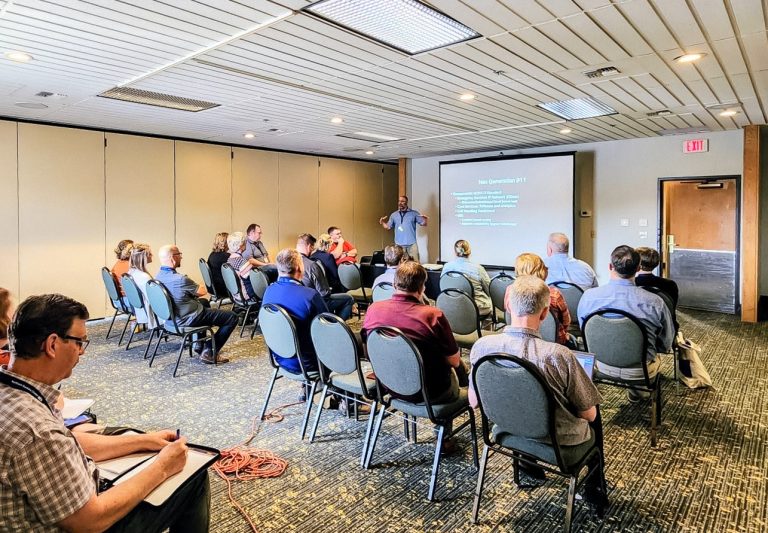
Good Password Hygiene
Earlier this year, a record setting personal data breach being hailed as the Mother of all Breaches (MOAB), exposed 26 billion individual personal records discovered by security research firm SecurityDiscovery.com.
The compromised information is known to contain data from past breaches as well as new data. The breach contains user login credentials and other sensitive information that is valuable to malicious actors.
Malicious actors will use this information to attack other accounts from compromised users. Attackers will try to use compromised passwords to see if they were reused for more high value accounts like email or banking. Attackers are also likely to send many more phishing attacks and spam emails targeting compromised people.
In order to best protect yourself, the Idaho Office of Technology Services (ITS) and the Idaho Office of Emergency Management (IOEM) recommend practicing good password hygiene. This is the most effective method to reduce the risk of your compromised user login information being exploited to access your accounts.
Password Hygiene Best Practices:
- Use passphrases. Passphrases are a sentence-like string of words that contains a mixture of uppercase, lowercase, and special characters that is easy to remember but hard to hack.
- Don’t reuse passwords or passphrases. Use a unique login for every online account you own. This prevents an attacker from gaining access to all your accounts with minimal effort.
- Use a password manager program. These are applications that store all your passwords in an encrypted database for easy use, can assist in generating new, unique passwords, and sync them across all your devices. A much better idea than a sticky note.
- Frequently change all your account passwords. Recommendation for password rotation is every 90 days. If that seems too frequent for you, try rotating passwords at least once a year on all your personal accounts.
- Use multi-factor authentication (MFA) whenever possible. Most users are already familiar with MFA for their bank or work accounts. This protects accounts from compromise by forcing users to provide their passcode along with a code. Typically, this is provided directly to a user’s cell phone via a one-time passcode or a phone application that pushes a request asking for approval to the device’s screen.
In addition to these best practices, ITS and IOEM encourage individuals to take part in annual cybersecurity training to be informed about the latest cybersecurity threats and to improve comprehension of how to remain safe online.
Keep Cool and Safe During Extreme Heat
With temperatures beginning to warm up around the state, the Idaho Office of Emergency Management (IOEM) urges everyone to stay resilient against the dangers of extreme heat. Defined as a prolonged period (2 – 3 days) of high heat and humidity with temperatures soaring above 90 degrees Fahrenheit, extreme heat poses significant risks to health and well-being.
In extreme heat your body works extra hard to maintain a normal temperature, which can lead to death. According to the Federal Emergency Management Agency (FEMA), extreme heat is responsible for the highest number of annual deaths among all weather-related hazards. Vulnerable populations such as older adults, infants, children, and individuals with pre-existing health conditions face the highest risks during such events.
To ensure the safety of yourself and your loved ones, it’s important to prepare for extreme heat and take proactive measures to stay safe:
Prepare for Extreme Heat
- Avoid relying solely on fans for cooling as they do not reduce body temperature effectively.
- Identify cool places in your community like libraries or shopping malls or seek out designated cooling centers. For a list of current cooling places, stay up to date with your local emergency management office or health district’s social media.
- Cover windows with drapes or shades and weather-strip doors and windows to keep heat out.
- Use window reflectors, insulation, and powered attic ventilators to regulate indoor temperatures.
- Install window air conditioners and insulate the area around them for efficient cooling.
- If you are unable to afford your cooling costs, weatherization, or energy-related home repairs, contact programs like the Low Income Home Energy Assistance Program (LIHEAP) for assistance.
Be Safe During Extreme Heat
- Never leave people or pets in a closed car on warm days, as temperatures inside can skyrocket quickly.
- It is never safe to leave a person or pet locked in the car (even in colder conditions).
- Rolling down the windows or parking in a shaded area does little to change the interior temperature of the vehicle.
- Make it a habit to check your entire vehicle, especially the back seat, before locking the doors and walking away.
- Place a personal item like a purse or briefcase in the back seat, as another reminder to look before you lock. Write a note or place a stuffed animal in the passenger’s seat to remind you that a child is in the back seat.
- Utilize cooling centers if air conditioning is unavailable at home.
- Contact local 2-1-1 for assistance and referrals to cooling centers.
- Check with local news sources on openings of select cooling centers.
- Take cool showers or baths and wear loose, lightweight, light-colored clothing.
- Reduce oven usage to minimize indoor heat generation.
- Seek shade when outdoors and stay hydrated by drinking plenty of fluids.
- Avoid strenuous outdoor activities during peak heat hours and check on vulnerable individuals like family members and neighbors.
- Be mindful of pet safety, ensuring they have access to shade and cool water.
- Consider pet safety. If they are outside, make sure they have plenty of cool water and access to comfortable shade. Asphalt and dark pavement can be very hot to your pet’s feet.
Recognize and Respond to Heat-Related Illnesses:
To keep you and those around you safe during an extreme heat event, it is crucial to be aware of the signs of heat-related illnesses and appropriate action.
Heat Stroke
- Signs include extremely high body temperature, hot and dry skin, rapid pulse, and altered mental state.
- If heat stroke is suspected, call 9-1-1 immediately and initiate cooling measures until help arrives.
Heat Cramps:
- Muscle pains or spasms in the stomach, arms, or legs may indicate heat cramps.
Heat Exhaustion:
- Symptoms include heavy sweating, paleness, muscle cramps, fatigue, dizziness, nausea, and fainting.
- Move to a cooler location, remove excess clothing, and hydrate with water or sports drinks. Seek medical attention if symptoms persist or worsen.
In the event of a medical emergency, contact your healthcare provider or call 9-1-1 for assistance.
Get more information about heat-related illnesses from the CDC and National Weather Service.
By staying informed, prepared, and vigilant, we can all beat the heat and ensure a safer summer for everyone in Idaho. Stay cool and stay safe!
For more information on Extreme Heat, visit:
IOEM’s May Third Thursday Training Sharpens Response Skills
The Idaho Office of Emergency Management (IOEM) continues to strengthen its preparedness with the monthly Third Thursday Training for the State Emergency Response Team (SERT). These sessions, held monthly, offer critical opportunities for staff to practice their response strategies, tackle challenges, and review procedures to ensure optimal readiness for any emergency or disaster.
For May, the training was spearheaded by IOEM’s SERT Operations team, who crafted realistic and complex scenarios based on the 2017 snowstorms the State of Idaho endured. These scenarios were selected not only for their complexity but also because they provide real-world answers and reflections on past events. The objective was to cross-train IOEM staff, particularly those who have never worked in the response operations section, to enhance their understanding and readiness.
Cross-training is a crucial component in the world of emergency management. By involving IOEM staff from various sections in the Operations scenarios, participants gained invaluable insights into the intricate processes and interactions that occur during a disaster. The Operations section frequently engages with other sections, and this training highlighted the variety of conversations and decisions that take place during an event or incident. This better understanding helps IOEM employees respond more effectively and cohesively during real-world situations.
IOEM staff members also took the time to familiarize themselves with and review the 16 Emergency Support Functions (ESFs) and the roles they play during emergency response. ESFs group state resources and capabilities into functional areas that are most frequently needed during a state response and serve as the primary mechanism for managing state assistance to local governments during emergencies. To make this learning process engaging, staff played a memory game where they matched each ESF’s name and resource to its respective number (e.g., Transportation = ESF 1, Communications = ESF 2, Public Works and Engineering = ESF 3, etc.).
One of the key takeaways from the training was the emphasis on collaboration. Effective emergency response relies heavily on strong relationships and seamless communication. Exercises like these demonstrate the potential setbacks that can occur if any individual or section is excluded from the decision-making process. Ensuring that all team members are informed and involved is essential for a coordinated and successful response.
“I’m so glad the Training and Exercise team has been able to grow and maintain Third Thursday,” shared Emergency Planner, Delanie Edmunds. “It’s hard to believe that we ever went without helping cross-train our fellow coworkers. I feel like everyone has gained a better perspective about what we do as an agency as a result of these training and exercise opportunities.”
As IOEM continues to enhance its emergency preparedness, the Third Thursday Training sessions stand out as a key part of building a strong and knowledgeable emergency response team. By focusing on ongoing improvement and cross-training, IOEM is making sure that Idaho is ready to handle whatever challenges may come our way.
IOEM Staff Attend 2024 National Preparedness Symposium
Five team members of the Idaho Office of Emergency Management (IOEM) traveled to the Center for Domestic Preparedness (CDP) in Anniston, Alabama from May 6-10, 2024, to join over 200 emergency management professionals at FEMA’s 2024 National Preparedness Symposium. Under the theme “Collaborative Preparedness and Resilience: Bridging Gaps Across Jurisdictional Boundaries,” this event focused on cutting-edge strategies for enhancing national resilience, including harnessing artificial intelligence (AI) for emergency response and learning lessons from recent disasters like the Maui wildfires.
During this action-packed week; Training and Exercise Chief, Levi Orr; Training Operations Coordinator, Autumn McMurdie; Training and Exercise Project Manager, Isaiah La Masters; Emergency Planner, Christina Lazar; and Emergency Planner, Delanie Edmunds; took part in a series of discussions and hands-on sessions. They explored the “whole of community” approach to climate resilience, which emphasizes the importance of getting everyone involved—government agencies, businesses, non-profits, and the general public—to tackle climate challenges together. These collaborative discussions are crucial as Idaho looks to bolster its defenses against future climate impacts.
AI in emergency response and preparedness was another hot topic. Attendees looked at how AI can improve predictive capabilities, streamline response efforts, and boost overall efficiency during emergencies. They also explored how AI and be utilized to train responders and emergency managers. While AI offers many benefits, it also presents challenges that need careful consideration.
One highlight of the symposium was the session on the Maui wildfires, which offered a deep dive into the disaster’s response and recovery efforts. The lessons learned from Maui will help IOEM and staff refine its strategies and ensure that Idaho is ready to respond swiftly and effectively to similar incidents.
Beyond these topics, the symposium also covered a wide range of other issues, including understanding and countering evolving security risks posed by nation-state threats, defining and serving underserved communities better by enhancing national standards for emergency management through the National Qualification System. The event also touched up on the guidance for state training officers on National Incident Management System (NIMS) and Incident Command System (ICS) training and explored the impacts of border security on emergency management and healthcare.
The event also provided great networking opportunities, where IOEM team members connected with peers from across the country, sharing best practices and building relationships to strengthen Idaho’s emergency preparedness and response capabilities.
The CDP was established in 1998 and is the nation’s only federally chartered Weapons of Mass Destruction (WMD) training center. The CDP offers top level hands-on training for America’s emergency responders, covering everything from chemical to radiological threats.
Enhancing Idaho’s Hazmat Response: Highlights from Hazmat Week 2024
The Idaho Office of Emergency Management’s (IOEM) Hazmat Week 2024 brought together hazardous materials professionals from across the state to enhance their preparedness and capabilities. This intensive five-day training event provided a platform for Regional Response Teams (RRTs) and Idaho State Police (ISP) Hazmat Specialists to improve their knowledge and skill set for responding to hazardous material incidents statewide. Hazmat Week also serves as a cornerstone in keeping Idaho hazmat response teams aware of evolving dangers and challenges they may encounter in the field.
This year, participants hailed from RRT3, RRT4, RRT6, RRT7, and ISP. RRTs are a state-level resource that is made up of members from fire departments across the state. RRT3 has members from Caldwell Fire, Nampa Fire, Emmett Fire, and Weiser Fire; RRT4 is made up of members from Boise Fire; RRT6 is made up of members from Pocatello Fire, and RRT7 is made up of members from Idaho Falls Fire. The ISP Hazmat Team is made up of five ISP officers from around the state.
By bringing together members of RRTs and ISP Hazmat Specialists, the event strengthens collaboration, and share knowledge and best practices.
Throughout the week, attendees engaged in a series of engaging training sessions tailored to address emerging threats and enhance response capabilities. Trainings were held at the Idaho Response Center, Fire Training Center in Boise, and Boise Fire Station 17. Some of the key classes included:
- TEPP Rad Training (Radiation Identification/Safety Levels): Participants gained a comprehensive understanding of radiation types, associated hazards, and appropriate personal protective equipment (PPE). Hands-on exercises with detection equipment provided practical experience crucial for accurate radiation monitoring and assessment.
- Battery Operation for Technicians (Lithium-Ion Battery Dangers): An interactive course, this class provided invaluable insights into the hazards posed by lithium-ion batteries. Attendees learned about fire suppression limitations and explored available tools while sharing real-life encounters with these increasingly prevalent hazards.
- Tactical Chemistry: Attendees honed their skills in identifying hazardous substances using a variety of tests and specialized equipment. This practical training enhances responders’ ability to identify substances quickly and accurately in both liquid and solid states.
Hazmat Week served as an opportunity to foster collaboration and network among different response teams statewide. Through shared experiences and collaborative discussions, participants identified common challenges and explored innovative solutions to improve response capabilities collectively.
By investing in training and creating opportunities for collaboration, IOEM ensures that responders are well-equipped to safeguard communities and mitigate the impact of hazardous material incidents across the state. For more information about Hazmat Week or those interested in hazmat training opportunities, please contact Sarah Cerda at scerda@imd.idaho.gov.
Blazing Awareness: Wildfire Preparedness Month in Idaho
As Idaho braces itself for another wildfire season, Governor Brad Little has designated May as Wildfire Preparedness Month. This declaration aims to raise awareness and readiness among residents, emphasizing the importance of proactive measures to mitigate wildfire risks.
With communities expanding into the wildland-urban interface, more residents are exposed to wildfire impacts. In fact, there is no county in the state without a significant wildland fire hazard. Data from FEMA and NOAA show that Idaho experiences about seven wildfire events each year, with the possibility of increased frequency due to climate change impacts.
Given the longer and more intense wildfire seasons, the Idaho Office of Emergency Management (IOEM) offers preparedness tips and encourages all Idahoans to remain vigilant and ready.
“Wildfires are oftentimes unplanned fires that give little warning and can spread quickly devastating wildlife, land, and communities,” said IOEM Director Brad Richy. “It is important to be ready at a moment’s notice.”
Wildfire Preparedness Measures:
-
- Staying Informed: Sign up for and stay up to date for local alerts, such as the Integrated Public Alert and Warning System (IPAWS), and monitor air quality alerts.
-
- Making a Plan: Ensure household members understand evacuation procedures, develop evacuation plans for workplaces and schools, and practice evacuation drills regularly.
-
- Strengthening Your Home: Utilize fire-resistant materials, identify outdoor water sources with hoses, establish a 30-foot fire-resistant zone around homes, and designate sealed rooms for smoky conditions.
-
- Knowing Your Evacuation Zone: Identify multiple evacuation routes and conduct evacuation drills with household members.
-
- Gathering Supplies: Stock up on essentials in a go bag, including a first aid kit, non-perishable food, water, phone charger, pet supplies, medication and N95 masks for smoke protection.
-
- Reviewing Important Documents: Keep insurance policies and identification documents up to date, and maintain digital copies in secure locations.
Wildfire Preparedness Month Events:
-
- Wildfire Awareness: FREE COMMUNITY CLASS — 5:30 – 6:30 p.m., May 17, 2024 at the New Leaf Nursery (12655 North Government Way Hayden, ID 83835)
IOEM Wildfire Mitigation Actions
IOEM implements several mitigation strategies that address wildfire hazards across the state. These strategies are designed to not only reduce the risk and impact of wildfires but also foster resilience within communities. Some key mitigation efforts include:
-
- Promoting Statewide Consistency for Local Plans: IOEM works to promote consistency in the hazard mitigation planning process at the local level. By providing guidance and resources, IOEM ensures that local communities and jurisdictions develop mitigation plans that effectively address wildfire risks while adhering to statewide standards.
-
- Developing a Statewide Approach to Modeling and Mapping: IOEM recognizes the importance of accurate modeling and mapping of wildfire hazards, both current and projected. By developing a statewide approach to this process, IOEM aims to provide communities with valuable data and insights to inform their mitigation efforts and land-use planning decisions.
-
- Utilizing ArcGIS StoryMaps: To enhance communication and transparency, IOEM displays approved State Hazard Mitigation Plan (SHMP) and mitigation success stories on ArcGIS StoryMaps. This interactive platform allows stakeholders to access information about mitigation projects, their outcomes, and the overall progress of statewide mitigation efforts.
-
- Providing Community Resilience Action Planning Assistance: IOEM offers assistance to communities in developing resilience action plans that promote cooperation, collaboration, and informed decision-making. These plans are interdisciplinary and solutions-oriented, taking into account the unique needs and challenges of each community. By creating equitable decision-making processes, IOEM ensures that stakeholders have a voice in shaping resilient communities that can withstand and recover from wildfire events.
By staying informed, prepared, and vigilant, you can significantly reduce the risks associated with wildfires to reduce the risks associated with wildfires and protect themselves and their properties.
For more information on preparing for a wildfire event, visit the following resources:


